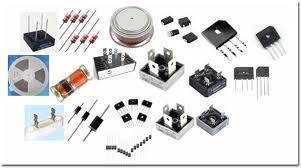How Does a Rectifier Work?
A rectifier is a device that is able to convert an alternating current into a direct current through a process known as rectification. This device is very important because most electronic devices require direct current. Rectifiers are often used in power supplies (such as the power adapter used in laptop computers) and to detect radio signals as well as fires. A rectifier is the exact opposite of an inverter and can be seen in virtually all electronic devices.
Alternating Current
Alternating current is a type of electric current that alternates between a positive charge and a negative charge. Alternating current is used to transfer large amounts of electricity and to power large electronic devices. While most electronic devices use direct current, alternating current is used on a much larger scale and can be seen on a daily basis.
Direct Current
Direct current is a type of electric current that only has one direction and does not alternate between positive and negative charges. Direct current is used in power supplies such as batteries and electronic devices such as cell phones, computers, toasters, televisions, and virtually all other forms of small electronics. While alternating current is used to transfer electricity, direct current is used to actually power the devices that society uses on a daily basis which is why alternating current is often converted to direct current via a rectifier.
Half-wave Rectification
In half-wave rectification, the rectifier receives an alternating current and blocks either the positive or negative charge so that only one charge can pass through. While half-wave rectification is very successful in converting alternating current into direct current, it is rather inefficient because only half of the electricity is converted while the other half is wasted.
Full-wave Rectification
In full-wave rectification, the rectifier receives an alternating current and allows both the positive and negative charge to pass through as an output but separates them so that they are both successfully converted to direct current. Full-wave rectification is much more efficient than half-wave rectification because it allows all of the electricity to be converted with very little waste. However, full-wave rectification requires more diodes and a more complicated rectifier.
Filter
Unfortunately, neither half-wave rectification or full-wave rectification provides a constant DC current. Instead, the rectifier creates bursts of DC current with a large amount of wasted alternating current. To fix this problem, a filter may be added to the rectifier, such as a capacitor, in order to stall the current while it is being converted. An inductor may also be used in combination with a capacitor or several capacitors in order to continuously convert the current between alternating current and direct current until a desirable direct current is achieved. A rectifier may also include a voltage regulator to step the current down in order to limit alternating current.
Unimolecular Rectifier
A unimolecular rectifier is a theoretical design for a rectifier that uses an organic molecule to convert alternating current into direct current. A unimolecular rectifier would work by stimulating a chemical reaction that would allow electron-rich moiety to flow to electron-poor moiety but not allow electron-poor moiety to flow to electron-rich moiety. While this uses basic physics and should work in theory, scientists are still trying to perfect the process. In the near future, however, unimolecular rectifiers may be a reality, leading to much more efficient conversions between alternating current and direct current.


Comments - No Responses to “How Does a Rectifier Work?”
Sorry but comments are closed at this time.